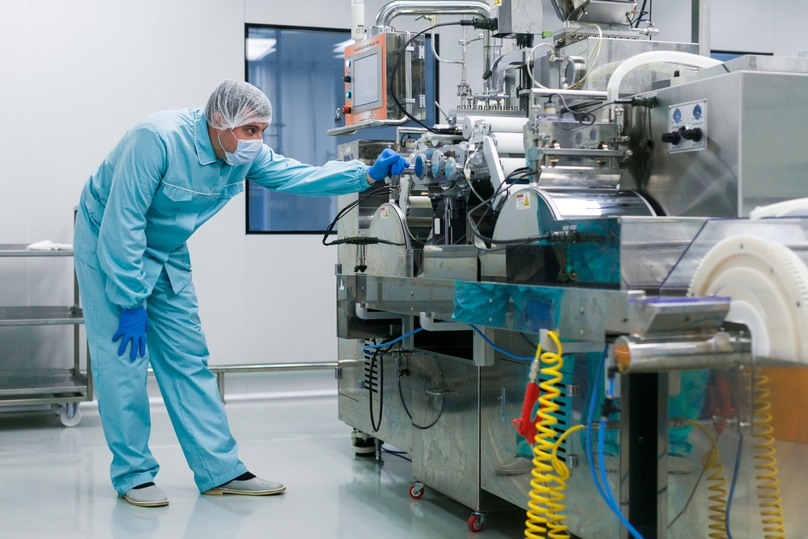Biopharmaceutical research often needs help with clinical sample management. From tracking specimen locations to maintaining accurate inventories, these challenges can significantly hinder productivity and affect the quality of research outcomes. Uniting teams, maintaining precise records, and ensuring regulatory compliance are not mere tasks but pillars to the success of any problems with clinical sample management and research operation.
Injecting Genemod into your lab workflow effectively overcomes these challenges. We have engineered our lab automation system and software to address these problems directly, reducing human error and championing precision. At the heart of our solution is the promise of simplifying complex tasks, giving researchers more time to focus on innovation rather than painstaking routine activities.
Genemod also excels in inventory management. Tagged by many as the best lab inventory management software, it eliminates the guesswork from managing lab supplies and optimizes efficiency. It keeps teams on the same page regarding inventory status and needs, preventing unnecessary delays and fostering a well-oiled research operation.
Inaccurate Sample Labeling and Solutions for Improved Identification
One of the most frequent issues in lab environments is incorrect sample labeling. This mistake can lead to significant setbacks, including false research outcomes or diagnosis. A dual-check system, where two personnel verify the sample labeling, can drastically reduce errors. Implementing barcodes or RFID technology simplifies tracking, ensures accurate identification at every step, and reduces human error.
Training is equally crucial. Regular workshops that emphasize the importance of precise labeling reinforce its significance. Coupled with technological solutions, a well-informed team can nearly eliminate inaccuracies in sample labeling, paving the way for reliable data and results.
Delayed Sample Processing and Strategies to Enhance Speed
Processing samples promptly is essential, yet delays are common, risking sample viability and the accuracy of outcomes. Streamlining your lab's workflow through automation can significantly reduce processing times. Automated systems for sample sorting, labeling, and initial analysis steps speed up the process and reduce the potential for human error.
Another strategy is the implementation of a lean management system in the laboratory. You can identify bottlenecks and inefficiencies by analyzing and optimizing each step of the sample processing sequence. Removing these roadblocks enhances speed without compromising quality, ensuring samples are processed swiftly and efficiently.
Conditions Affecting Sample Integrity and How to Maintain It
Maintaining sample integrity is paramount for accurate research and diagnostic outcomes. Temperature fluctuations, cross-contamination, and improper storage are common culprits that compromise sample quality. Invest in high-quality, reliable refrigeration systems with real-time monitoring and alerts for temperature deviations to counteract temperature issues. Regular maintenance checks on these systems ensure they function optimally.
Cross-contamination can be minimized with rigorous adherence to cleaning protocols and using disposable materials whenever possible. Upgrading storage solutions to minimize human handling — through automation, for instance — further preserves sample integrity. Each step taken to create an environment that supports sample preservation contributes directly to the reliability and accuracy of your lab's work.
Challenges in Sample Storage and Organizational Solutions
Storing clinical samples effectively can make or break the workflow in research labs. Samples that are stored incorrectly not only lead to wasted materials but may also compromise entire studies. A key to conquering this challenge is a tight organizational system. Clear storage protocols, regular training, and frequent audits can drastically improve the situation. Shelves labeled with easy-to-read, durable signs that resist lab conditions are a first step. Next, ensuring every sample has a designated spot prevents overcrowding and confusion, much like a well-organized library.
Implementing a digital management system can also have significant benefits. With an electronic system, tracking every sample's location, condition, and history becomes straightforward. The advanced software offers alerts for mishandled samples and prompts for necessary actions, making it easier for lab managers to maintain an organized storage system and take timely corrective measures.
Inefficient Tracking of Samples and Modern Tracking Approaches
Inefficient tracking of samples can create a ripple effect of inefficiency throughout a lab. The old-school approach of manual logs is prone to human error. Luckily, modern tracking approaches can revolutionize how samples are managed. One of the most effective methods is employing barcode or RFID technology. Each sample gets a unique identifier that, when scanned, pulls up its entire history. This saves time and virtually eliminates the risk of sample misidentification.
To fully embrace modern tracking, labs should consider integrating a Laboratory Information Management System (LIMS). LIMS can standardize sample management processes, providing a central database that's accessible yet secure. Transitioning to such a system requires an upfront investment in both time and training, but the payoff in accuracy and efficiency is immense, as it streamlines the workflow and reduces error margins substantially.
Join Genemod: Empower Your Lab
Excelling in biopharma research calls for an effective response to the problems with clinical sample management. Genemod shares your commitment to this cause. We understand the stakes and have built our solutions to transform these challenges into stepping stones toward a more efficient and productive lab. Join us today.















